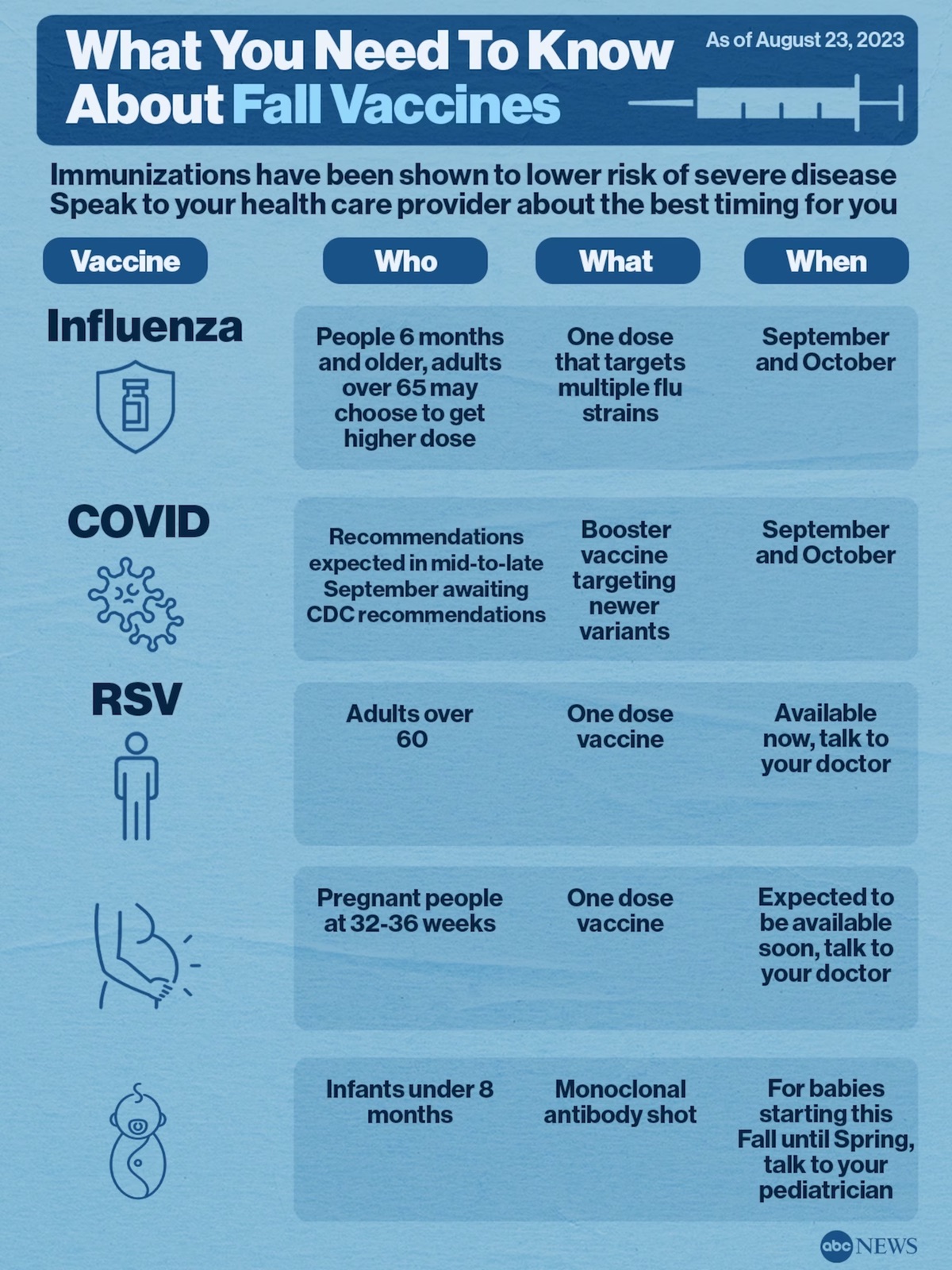Category Archives for articles
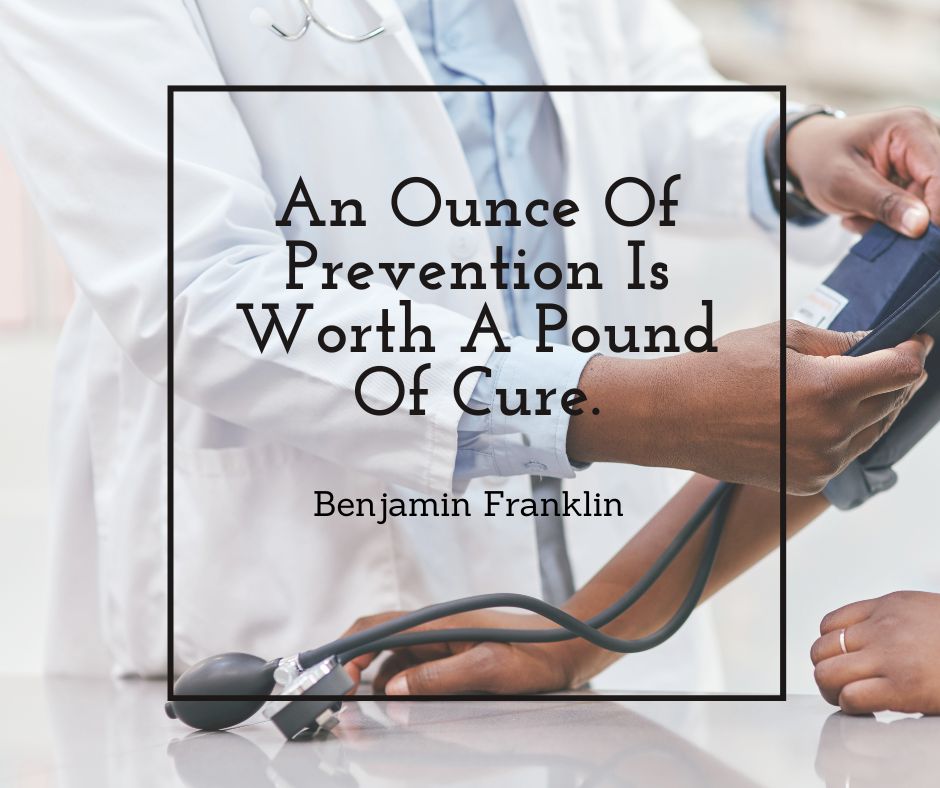
Don’t Wait for the Sirens: Prioritize Your Health with Primary Care
an ounce of prevention is worth a pound of cure." as Benjamin Franklin once famously said.
Primary Care: More Than Just a Routine Visit
Primary care serves as the frontline in population health, focusing on the overall well-being of individuals. It's not just about diagnosing and treating illness, but about building a relationship with your providers, understanding your health risks, and taking proactive steps towards a healthier future.- Decreased Emergency Visits: Studies in 2023 show that individuals who regularly visit their primary care physicians have a 20% lower chance of visiting an emergency room compared to those who don't.
- Better Chronic Disease Management: 60% of Americans have at least one chronic condition. Those with regular primary care oversight report better disease management and quality of life.
- Cost Savings: Regular primary care appointments lead to a 15% reduction in overall healthcare costs, translating to billions of dollars saved annually.
The Ripple Effect of Neglect
Paramedics, those on the frontline of emergencies, often encounter patients who've ignored or missed the early signs their bodies were giving them. By not having regular primary care check-ups, many conditions that are manageable, or even preventable, escalate into life-threatening emergencies. This not only places a tremendous burden on emergency medical systems but also poses a grave risk to the individual's health.A Simple, Proactive Approach
Following the guidelines set by the American Heart Association, which recommends at least 150 minutes of moderate exercise per week and a balanced diet, can make a significant difference in your health. Combining these practices with regular visits to your primary care doctor ensures you're on the right track, catching potential issues before they become severe.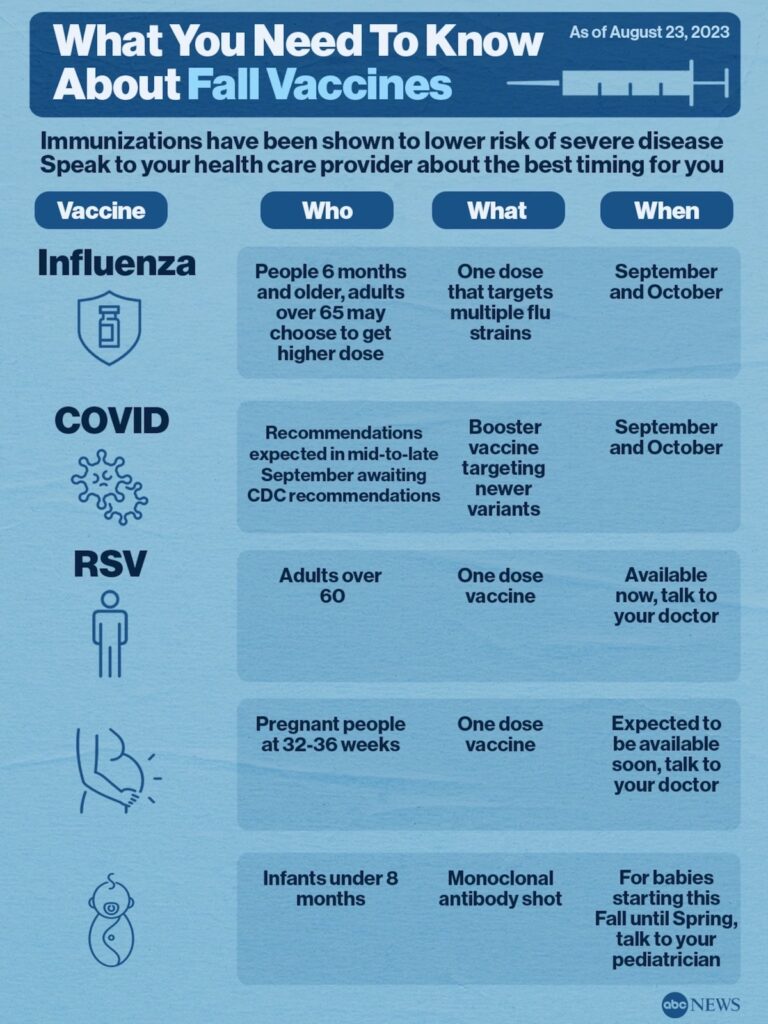
RSV Vaccine – Recommended for those over 60
A trio of vaccines are emerging for adults this Fall, especially those most at risk, with the recent approval of a new adult Respiratory Syncytial Virus (RSV) vaccine. Consult with your primary care if you have questions, as most public health experts are expecting a new COVID-19 booster along with their annual flu shot and this new RSV vaccine for those at risk.
How is RSV Different Now?
According to a recent article by the Cleveland Clinic, Why Is RSV Different Now Than In Past Years?: "RSV has surged in nearly all populations. According to the U.S. Centers for Disease Control and Prevention (CDC), an estimated 58,000–80,000 children younger than 5 and an estimated 177,000 adults over the age of 60 are hospitalized each year after getting infected with RSV. Of those older adults, as many as up to 14,000 of them die from their RSV infection each year.
Recent RSV seasons have caused those numbers in older populations to increase nearly 10-fold, with about 15 out of every 10,000 people older than 50 being hospitalized for their RSV infection."
Risk factors for severe RSV disease
According to an August 30, 2023 recommendation by the Centers for Disease Control & Prevention (CDC) evidence indicates that persons aged 60 years and older who are at highest risk for severe RSV disease and who might be most likely to benefit from vaccination include those with chronic medical conditions such as:
- Cardiopulmonary disease,
- Kidney disorders,
- Liver disorders,
- Neurologic or neuromuscular conditions,
- Hematologic disorders,
- Diabetes mellitus, and
- Moderate or severe immune compromise (either attributable to a medical condition or receipt of immunosuppressive medications or treatment);
as well as:
- Persons who are frail*;
- persons of advanced age†;
- persons who reside in nursing homes or other long-term care facilities; and
- persons with other underlying conditions or factors that the provider determines might increase the risk for severe respiratory disease.
*Frailty is a multidimensional geriatric syndrome and reflects a state of increased vulnerability to adverse health outcomes. Although there is no consensus definition, one frequently used tool is the Fried frailty phenotype in which frailty is defined as a clinical syndrome with three or more of the following symptoms present: unintentional weight loss (10 lbs [4.5 kg] in the past year), self-reported exhaustion, weakness (grip strength), slow walking speed, and low physical activity.
†Among adults aged ≥60 years, RSV incidence increases with advancing age. Although age may be considered in determining an older adult patient’s risk for severe RSV-associated disease, there is no specific age threshold at which RSV vaccination is more strongly recommended within the age group of adults aged ≥60 years.
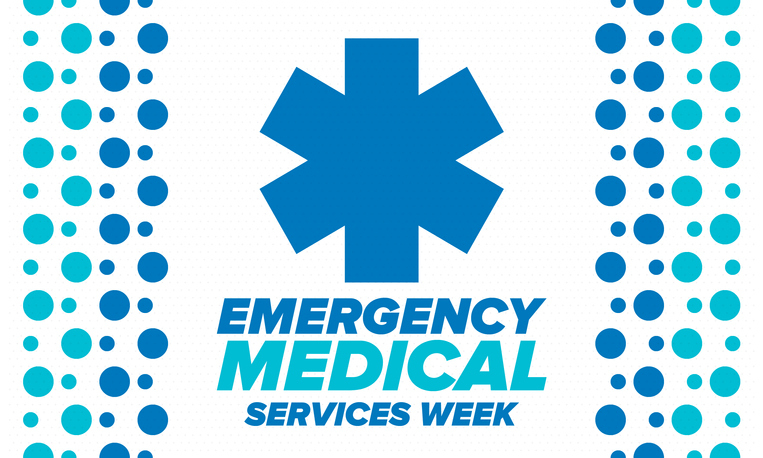
National EMS Week

National EMS Week is a time to recognize and appreciate the incredible contributions of Emergency Medical Services (EMS) professionals who tirelessly serve our community. From May 21 to 27, 2023, let's take a moment to reflect on the invaluable role of EMS services and the profound impact they have on the well-being of our community.
Dedicated First Responders
EMS professionals bravely respond to emergencies, provide critical care and help in people's biggest time of need. They are often the first on the scene, offering immediate medical attention and support during some of life's most challenging moments. Their knowledge, skills, and dedication can make all the difference in preserving life and reducing the severity of injuries.
Rapid Response and Timely Care
During emergencies, time is of the essence, and EMS services play a crucial role in delivering rapid response and timely care. Whether it's a heart attack, a car accident, or a sudden illness, EMS professionals possess the expertise to assess the situation, stabilize patients, and transport them safely to medical facilities. Their ability to act swiftly and efficiently significantly increases the chances of a positive outcome.
Community Health and Public Safety
EMS services not only focus on immediate emergency response but also contribute significantly to the overall health and safety of the community. They provide education, training, and support to help individuals and families prepare for emergencies, promoting proactive measures like CPR and first aid training. EMS professionals collaborate with other healthcare providers, fire departments, and law enforcement agencies to ensure comprehensive and coordinated emergency care.
Compassionate Care and Emotional Support
In addition to their medical expertise, EMS professionals exhibit compassion and empathy during challenging times. They offer reassurance and emotional support to patients and their loved ones, alleviating fear and anxiety. Their presence brings comfort and a sense of security, fostering trust and understanding within the community.
Adaptability and Versatility
EMS services face a diverse range of emergencies, often requiring quick thinking, adaptability, and versatility demonstrated by helping our community through the COVID19 pandemic. Whether responding to natural disasters, mass casualty incidents, or community health crises, EMS professionals demonstrate resilience and resourcefulness in managing complex situations. They continuously update their knowledge and skills to stay at the forefront of medical advancements and best practices.
A Reminder of Exceptional Dedication
National EMS Week serves as a reminder of the exceptional dedication and selflessness displayed by EMS professionals in our community. Their commitment to saving lives, providing timely care, and promoting community health is truly commendable. As we celebrate this week, let us express our gratitude and support for these extraordinary individuals who make a difference every day, ensuring our safety and well-being.
Please take a moment to thank the EMS professionals in our community, and consider getting involved by supporting local EMS organizations, volunteering, or participating in community education programs. Together, we can create a safer and healthier future for all.

A Special Thank You to a Local Business – Chez Mike’s
We are sincerely grateful to Chez Mike’s Restaurant for providing our crews with a delicious Thanksgiving dinner. We are so blessed to have the support of the East Greenbush community, and business owners like you who go above and beyond. The dinners were delicious and very much appreciated. THANK YOU!
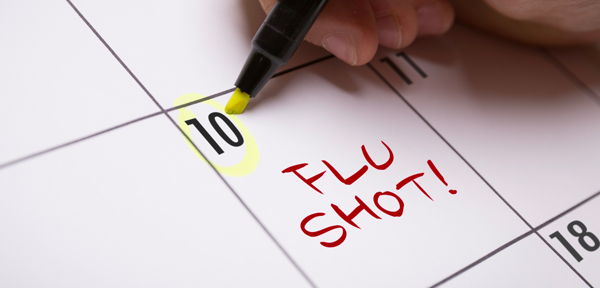
‘Tis the (flu) Season
It’s the most wonderful time of the year – flu season. A study conducted by the Center for Disease Control and Prevention found that approximately 8% of the U.S. population contracted the flu in 2018. Taking into account seasonal flu, the CDC found that number varied from 3% to 11%. The term seasonal flu is used to describe symptoms and sickness which occur during the same period each year, typically winter months.
The flu is caused by influenza viruses that are easily transmitted from person to person. Two types of influenza (A and B) are responsible for causing seasonal flu each year, infecting the nose, throat and lungs causing mild to severe illness.
The main difference between influenza A and B is that influenza A can be carried and spread by both humans and animals, allowing the virus to develop different strains in a short period of time, thus making pandemic flu a possibility. Influenza B is generally only carried by humans and as such, the virus typically does not produce the high volume of strains as its counterpart.
the best way to prevent contracting flu is to receive your annual flu shot, washing your hands often with soap and water, covering your mouth with a tissue when you cough, and disinfecting commonly used surfaces.
There are certain populations at a higher risk for hospitalization as a result of contracting flu including young children, the elderly and individuals who are immunocompromised. For these individuals, flu can lead to serious complications and even death.
A study conducted in 2018 and published by Clinical Infectious Disease Journal found that on average, children under 18 years of age are at the highest risk of contracting flu, while adults aged 65 and older are least likely to contract the virus.
Symptoms of flu can mimic the common cold and include sore throat, congestion, runny nose, cough, headaches, fatigue, body aches, vomiting and diarrhea; fever may or may not be present. The difference between the common cold and flu is that flu typically begins suddenly with no pre-existing symptoms.
At this point, you’re probably asking yourself, “Okay, so how can I avoid getting sick this year?”
The answer is that the flu virus is spread from person to person by tiny droplets released when infected individuals cough, sneeze, or talk. Those tiny droplets can be inhaled through the mouth and/or nose to the mouths and noses of those unlucky individuals who happen to be in proximity to someone with the virus. Although occurring less often, flu can be spread by coming into contact with something that has flu virus on it, like a pen, doorknob or computer keyboard and then subsequently touching your nose, throat, mouth, or eyes. The single best way to prevent contracting flu is to receive an annual flu shot.
So what should you do if you think you’ve contracted the flu?
The majority of individuals who become ill do not need to seek medical care or be treated with antiviral drugs. Most doctors recommend staying home to prevent infecting others, getting plenty of rest and drinking fluids. On the other hand, if you are a member of a high-risk population or are concerned about your symptoms, you should call your doctor as soon as possible. Treatment using antiviral drugs is encouraged immediately for people with asthma, diabetes or heart disease because serious complications can occur when these individuals contract flu. It has been shown that early treatment with antiviral medications (specifically within two days of symptom manifestation) provides the best treatment of flu. However, there is no detriment in taking these medications later in the course of illness because they can still aid in preventing further sickness.
The single best way to prevent contracting flu is to receive an annual flu shot.
While the effectiveness of the flu vaccine can vary, the CDC has found that vaccination can reduce the risk of illness by 40-60%. That being said, different strains of flu may not respond to the vaccine and thus, individuals can still become sick even after receiving the vaccination; however, this should not be a deterrent from receiving an annual flu shot as the chances of becoming ill significantly decrease with regard to the most prevalent strains of the virus. Other steps you can take to prevent becoming sick include washing your hands often with soap and water before touching your eyes, nose and mouth, covering your mouth with a tissue when you cough, disinfecting commonly used surfaces and staying home from school or work for at least 24 hours after fever subsides without the use of medications such as Tylenol and Advil.
While this information may seem overwhelming, the best way to prevent contracting flu is to receive your annual flu shot, washing your hands often with soap and water, covering your mouth with a tissue when you cough, and disinfecting commonly used surfaces.
If you become sick, monitor your symptoms and call your doctor if you think you need further care. Wash your hands and stay home if you are sick!!!! These simple measures will go a long way in preventing illness.
Further information regarding the flu can be found by visiting the Center For Disease Control and Prevention’s website, the National Institutes of Health website found at and the World Health Organization’s website.
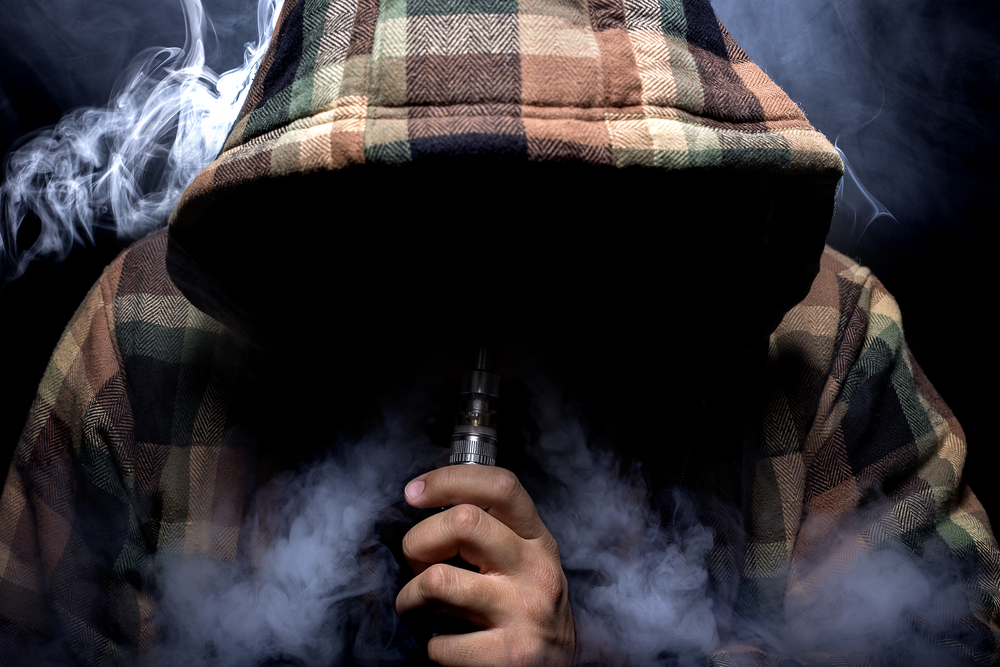
Vaping & Lung Related Injuries
Vaping - you can’t turn on a television or radio, pick up a newspaper or magazine (or venture online to any news source) and not be bombarded by a deluge of reports on a mystery illness that has been swiftly spreading across the nation.
Every day there are more deaths linked to this as yet undefined lung illness which has been established as directly related to the use of electronic cigarettes (commonly referred to as e-cigarettes) and the process by which they deliver nicotine and other products, called vaping.
E-cigarettes are also known as vape pens, vapes, mods, and electronic nicotine delivery systems (ENDS). These devices work by heating the liquid inside the cartridges or pods which creates an aerosol that is then inhaled, as one would do when smoking a traditional cigarette. The liquid inside these devices can contain nicotine, tetrahydrocannabinol (THC) and cannabinoid (CBD) oils, as well as other substances and additives, including unknown chemicals. The most common uses of the e-cigarette is to deliver nicotine and/or THC. E-cigarettes containing specifically nicotine are available in various strength cartridges that can be adjusted to further increase the voltage on the device, delivering additional, higher amounts of nicotine.
So what’s all the hype about with this vaping crisis?
How is it any different than smoking cigarettes? Vaping and e-cigarettes were originally marketed as a smoking cessation aid and many former cigarette smokers credit vaping as the single most important factor in their ability to quit smoking cigarettes. Surprisingly, studies published by Johns Hopkins Medicine revealed that electronic cigarettes are just as addictive as regular cigarettes and therefore, do not present an effective means by which to quit smoking cigarettes. Additionally, these devices have not been approved by the FDA to be utilized for smoking cessation. Furthermore, a recent study showed that individuals who used e-cigarettes as a means of smoking cessation not only returned to smoking traditional cigarettes, but utilized e-cigarettes as well.

E-cigarette use by high school students had increased by 900 percent, with 40 percent of those users never having even smoked a regular cigarette or used any other form of tobacco
CDC Report
When it comes to the vaping epidemic, the broader concern lies within the marketing tactics used to entice teens to begin using e-cigarettes. According to Johns Hopkins Medical Center, the U.S. Surgeon General reported that in 2015 e-cigarette use by high school students had increased by 900 percent, with 40 percent of those users never having even smoked a regular cigarette or used any other form of tobacco. It has become abundantly clear as time passes that e-cigarettes are becoming increasingly attractive to teens because they (falsely) believe that vaping is less harmful than smoking cigarettes. The fact that e-cigarettes tend to cost less than regular cigarettes may also play a role in the increase in amount of teens choosing to vape.
Finally and probably the most problematic factor in teen use of e-cigarettes, is that the cartridges and liquid used in the devices come in a variety of flavorings which appeal to a younger audience such as watermelon, cotton candy, mint, mango, apple pie - the list goes on. So why wouldn’t a teen participate in the use of e-cigarettes and vape pens? They’re cheaper than cigarettes, they don’t produce a foul smell, they come in various enticing flavors and they are led to the belief that using these devices is a healthy alternative to smoking cigarettes. Currently, across the country efforts are being made to ban the sale of flavored vape “juice” in hopes that this will deter teens from using e-cigarettes.
Now, to the nitty-gritty facts:
- Currently, the Center for Disease Control’s website lists that as of October 1, 2019, 1,080 lung injury cases associated with vaping have been reported from 48 states and one U.S. territory.
- Eighteen deaths have been confirmed.
- 16% of these patients are under eighteen years old
- 21% being between the ages of 18 and 21
- 81% of patients are under 35 years old
These statistics are increasing so steadily that the CDC now updates their website with new information every Thursday.
What Symptoms Are People Having?
So, people are getting sick, they are suffering from some unknown lung illness, but we do not know why these illnesses are occurring and by what processes they are occurring within the body. It is only by gathering data that we will be able to learn why people are becoming ill and thereby develop ways in which to prevent illness and death related to vaping and the use of e-cigarettes. The symptoms recorded across the board in patients with these lung related illnesses includes cough, shortness of breath, cheat pain, nausea, vomiting, diarrhea, fatigue, fever and abdominal pain. Patients report both becoming acutely ill and others note that their symptoms increased over the course of several weeks. There has been no correlation between existing lung infections and vaping related illnesses.
The takeaway here is that there are just too many unknowns when it comes to the health effects of vaping and the use of e-cigarettes, including the specific chemical makeup of the products being used which is compounded by the fact that no single product or substance seems to be identified in every single case. Ingredients in the products vary greatly and there is no way that a consumer can identify what is contained in the products that they are purchasing and using. Some products may have been altered by the supplier. The bottom line is that there is just no way to know what you are purchasing.
So what can you do?
The obvious answer is to discontinue use of e-cigarettes and vaping products, especially products which contain THC, which appears to have a strong correlation between use and illness. According to the Center For Disease Control’s website, efforts are being made to respond to this public health crisis including identifying and defining the risk factors and sources of lung disease associated with e-cigarette use and vaping, maintaining close communication with state, local and clinical practitioners regarding recommendations for treatment and prevention and developing lab procedures to identify the cause of illness, thereby providing better patient care and favorable patient outcomes.
What it boils down to is that there are just too many unknowns when it comes to why and how these illnesses are occurring. It is better to operate on a “better safe than sorry” mentality and educate yourself, your family and friends regarding the health risks associated with vaping and e-cigarette use. If you, a family member, or a friend experience any of the symptoms listed above, seek medical attention immediately through a primary care physician, local urgent care, or emergency room.
Are you an adult who has quit smoking or trying to quit smoking?
The CDC has very specific recommendations:
- Do not return to smoking cigarettes.
- If you continue to use e-cigarettes, carefully monitor yourself for symptoms and see a healthcare provider right away if you have symptoms like those reported in this outbreak.
If you are an adult who is trying to quit smoking:
- Contact your healthcare provider if you need help quitting tobacco products, including e-cigarettes.
- Use evidence-based treatments, including counseling and FDA-approved treatments.
More Resources
More information regarding e-cigarettes and vaping can be found by visiting the Centers for Disease Control’s website at https://www.cdc.gov/tobacco/basic_information/e-cigarettes/severe-lung-disease.html
Johns Hopkins Medical’s website found at https://www.hopkinsmedicine.org/health/wellness-and-prevention/5-truths-you-need-to-know-about-vaping
The Center on Addiction’s website located at https://www.centeronaddiction.org/e-cigarettes/recreational-vaping
Free resources & counseling offered by NYS Smoker's Quit Line.
Rensselaer County resources:
The Butt Stops Here
Seton Health @ St. Mary’s Hospital
The program fee is $45 Medicaid participants pay a $20 fee for seven 1-hour sessions with the option of signing up for additional support sessions and is covered by some health plans. The program includes a workbook and 4-weeks of nicotine patches or gum. Tuesdays 6:00-7:00p To register for The Butt Stops Here, call (518) 459-2550. For more information,visit our website at quitsolutions.org
1300 Massachusetts Avenue, Troy, NY 12180
Phone: (518) 459-2550

These Small Tips to Keep You & Your Family Safe
As summer draws to a close, temperatures start to cool off, especially at night. It’s only a matter of time until we reluctantly head to the thermostat to turn the heat on. If you’re like most, you try to wait as long as you can to flip that switch, thinking that maybe it will stave off the cold weather longer.
It's important to safeguard against Carbon Monoxide -- a silent killer.
Carbon Monoxide (CO) is an odorless and colorless gas which is found in fumes that are produced when you burn fuel, like when you turn your car, stove, grill, fireplace, or furnace on. If safeguards are not in place, the fumes these items generate can accumulate indoors and poison both people and animals, causing injury and death.
According to the National Safety Council, more than 400 people die annually as a result of Carbon Monoxide poisoning, with more than 20,000 people visiting an emergency room for symptoms and 4,000 being admitted to the hospital.
CO poisoning can often mimic “flu-like” symptoms - headache, fatigue, nausea, dizziness and shortness of breath. Late signs of Carbon Monoxide poisoning are confusion, vomiting, loss of consciousness and ultimately death. It’s imperative to know and recognize the early symptoms as soon as possible to prevent injury and death.
Simple Safety Tips
Fortunately, there are simple safeguards that you can put in place to prevent carbon monoxide poisoning and they include:
- Have a working CO detector on every floor of your house and outside every bedroom. Check the batteries in them every year, test them every month to make sure that they are operational and follow the manufacturer’s instructions regarding when to replace them;
- Get your furnace, water heater and other gas burning appliances in your home inspected and serviced every year by a qualified professional;
- Inspect and clean your chimney every year. Ensure that the damper is open before using it and left open well after use;
- Never use a gas oven to heat your home;
- Never use portable, flameless, chemical heaters in your home;
- Only run gas generators more than 20 feet from any window and never inside your home, basement or garage
- Pull your vehicle out into the driveway and away from the house - Never let a vehicle run in an attached garage.
- If your CO alarm alerts, vacate your house immediately, call 911 as soon as possible and wait for emergency personnel to arrive.
Winter is Coming...
While you’re putting away lawn furniture and readying your home for colder weather, making a few small observations and putting the safeguards above in place will ensure that your family is protected from Carbon Monoxide poisoning.
More information regarding CO poisoning can be found by visiting: The Center for Disease Control and Prevention: https://www.cdc.gov/co/faqs.htm; Safe Kids Worldwide: https://www.safekids.org/blog/its-national-carbon-monoxide-awareness-week; The National Safety Council: https://www.nsc.org/home-safety/safety-topics/other-poisons/carbon-monoxide; and the U.S. Fire Administration: https://www.usfa.fema.gov/prevention/outreach/carbon_monoxide.html.
Bike helmets spare lives!
According to the National Highway Traffic Administration, 783 bicyclists were killed in 2017, with the majority of accidents occurring in larger cities and towns, as opposed to more rural areas. A large percentage of these accidents involved motor vehicles. Simple, common-sense measures can ensure that you are able to enjoy cycling without becoming involved in an accident.
Cycling is an enjoyable activity either alone, or with friends and family. Some folks compete in races, while some enjoying cycling because it can be easier on joints while still providing all of the benefits of cardiovascular exercise. Many enjoy cycling with friends and/or family as a way to spend time together while staying active. Regardless of which category you fall into or where you choose to cycle, (on the road, bike path, sidewalks in your city or town, or just around your neighborhood) it is important to remain vigilant, take appropriate safety measures and maintain equipment to prevent accidents from occurring.
The single most important measure you can take is to always wear a properly fitted helmet. Middle-age bicyclers encompass the largest number of cyclists to be injured or killed. Wearing a helmet is the best way to prevent a head injury, should an accident occur. In the United States, all helmets must meet the standards of the U.S. Consumer Product Safety Commission.

The National Highway Traffic Administration offers the following information when shopping for a properly fitted helmet:
- First, measure your head and try several helmets on until you find one that feels comfortable. Place the helmet level on top of your head and adjust until snug. The helmet should be level on your head, low on your forehead and allow space for one to two fingers to be placed between your eyebrows and the helmet;
- Next, adjust the side straps. If the helmet has a lock option, lock the slider in that position;
- Buckles should be centered on the chin and are adjusted from the back of the helmet. The chin strap should be snug, with no more than one or two fingers able to fit under the strap; and
- Finally, it is imperative to replace a helmet if you have been in an accident.
Adequate preparation is another element of bicycle safety. Check your equipment to make sure that it is functional, i.e. – adequate amount of air in the tires and checking that the brakes work. Ensure that shoelaces are secured so as to not become entangled in the bicycle’s wheel spokes or chain and never biking while wearing sandals/flip flops. When possible, planning a route that typically has less traffic and slower speed limits is a good idea. Of course, there is always the option of cycling on a designated bike path, which obviates the danger associated with motor vehicles.
Once out on the road, it is imperative to follow the rules of the road, which include:
- Keep both hands on the handlebars with the exception of signaling to turn or stop your bicycle;
- Cycle with the flow of traffic, meaning riding in the same direction as the vehicles on the road;
- As a bicyclist sharing the roadway, you must obey all traffic signs, signals and road markings;
- Use hand signals to indicate a change in direction or that you will be stopping your bicycle. When signaling, it is good practice to look over your shoulder to identify any impediment to your changing lanes;
- Make sure to look left and right when crossing the street or intersection. Be cautious of motorists who may be pulling in or out of parking spaces and/or driveways or parking garages. ALWAYS assume that other drivers do not see you and act/react accordingly;
- NEVER wear headphones, text message on your cell phone, or utilize anything that may distract your attention from your surroundings;
- Consistently scan the area ahead and around you for potential hazards that may cause you to fall such as pebbles, cracks in the roadway, potholes, grates and train tracks;
- Should you choose to cycle in a group, always ride in a single file, straight line; and
- When cycling at night, early in the morning, or in low visibility conditions, ensure that you wear bright colored clothing during the day and reflective clothing or taping at night. A front light and rear reflectors should be affixed to the bicycle, itself. An even better safety measure is to purchase a flashing light for the rear of the bicycle.
For those who choose to cycle on a sidewalk or bike path rather than on the roadway, the same tips regarding the rules of the road apply, but there are some additional safety tips which are specific to cycling on a sidewalk or bike path:
- Be vigilant for pedestrians and always pass with caution while announcing your presence, which is as simple as stating, “Passing on your left.”
- When crossing a street, look both ways for oncoming traffic before proceeding through an intersection; and
- Again, as with cycling on the roadway, be vigilant for vehicles that may be backing out of driveways or turning.
The above safety measures may appear to be catered specifically to adults, however, they remain applicable to children. When purchasing a bicycle for your child, it is important to bring your child along so as to ensure that the bicycle is the right fit, including the child being able to touch the ground while sitting on the bicycle seat. Most sporting goods stores have professionals who can assist you in selecting the proper bicycle fit for your child.
Riding with your child until they are comfortable enough to ride on their own and riding on sidewalks whenever possible are two important safety measures. Studies shown that most children are not able to judge speed and distance appropriately enough to safely cycle on their own until age 10. Of course, every child is unique and you shouldn’t allow your child to cycle on their own until you feel comfortable that they are able to make safe judgments and decisions while cycling. Again, ensuring proper maintenance of the bicycle is of utmost importance. Teach your child to inspect the tires, as well as the brakes on the bicycle.
Once again, a helmet should be worn at all times. According to the organization Safe Kids Worldwide, wearing a bicycle helmet may reduce the risk of head injuries by at least 45%. Unfortunately, studies have shown that less than half of children 14 and under regularly wear bike helmets.
Finding the right size helmet is hands-down the most important component of bicycle safety, as discussed. Once again, make certain that the helmet conforms to the U.S. Consumer Product Safety Commission’s (CPSC) standards. The helmet should be in a level position on top of the head and should not be able to move forward, backward, or side to side. Make sure that your child understands the importance of always buckling the helmet strap. Safe Kids Worldwide recommends the following:
- EYES check: Position the helmet on the head. Look up: the bottom rim of the helmet should be visible. The rim should be one to two finger-widths above the eyebrows;
- EARS check: Make sure the straps of the helmet form a “V” under the ears when buckled. The strap should be snug but comfortable; and
- MOUTH check: Open the mouth as wide as you can. Does the helmet “hug” your head? If not, tighten those straps and make sure the buckle is flat against the skin.
Finally, as well all know, children learn from the behavior of adults. Make sure that you consistently practice bicycle safety and your children will follow suit.
Cycling can be a fun, enjoyable, heart-healthy activity both individually or as a group, including friends and family. However, safety measures must be taken to guard against accidents and serious injury. Utilizing the above tips is a good start on the way to becoming a safe and informed cyclist. Your local sports stores and specialty bike shops should be able to help you in purchasing the correct bicycle for your needs as well as fit you for a helmet. In addition, there are many resources which provide more in-depth detailed information, including:
- The National Safety Council’s website found at: https://www.nsc.org/home-safety/tools-resources/seasonal-safety/summer/bicycles;
- The League of American Bicyclists: https://www.bikeleague.org/;
- AAA Exchange: https://exchange.aaa.com/safety/bicycle-safety/#.XVGUi-hKg2w; and
- Safe Kids Worldwide: https://www.safekids.org/bike.
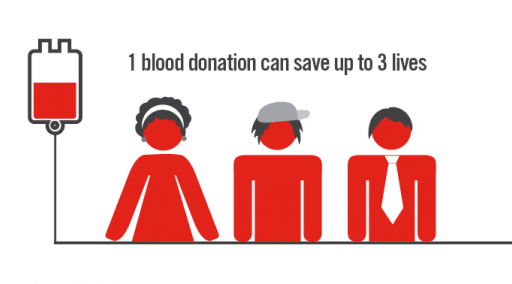
Why we partner with the American Red Cross

The Bruen Rescue Squad is proud to partner with the American Red Cross and be a part of all they do for our community, our country and around the world.
Our blood drive is important to patients in need, but the collection and distribution of blood is just a small part of all the Red Cross does.
The enormity of what the Red Cross accomplishes every day is astounding and this is one of the reasons we chose them as one of our core community outreach partners.
- Every 60 seconds, 44 people in America are assisted by the American Red Cross.
- 15,500 people every day receive lifesaving Red Cross health and safety training.
- 1,000 times a day the Red Cross provides services to military members, their families and veterans.
- 190 times a day Red Cross workers help families affected by a home fire or disaster.
From a blood supply standpoint:
- The Red Cross must collect 14,000 units of blood each day.
- The blood collected by the Red Cross helps millions of patients in over 2,400 hospitals across the country.
- 80 percent of blood donations are given at blood drives are hosted by generous sponsoring organizations like ours.
At the Bruen Rescue Squad, we are proud to hold blood drives in partnership with the Red Cross, giving us all an opportunity to make a difference.
Our next drive is coming up on Saturday August 10. We still 8am – 12pm open appointment slots to fill.
There are many ways you can help, but most importantly we hope you come out to donate. If you can’t donate, please consider joining volunteer team or help spread the work by promoting our drive on social media.
Thank you for making the Bruen Rescue Squad such a success. Let’s make an impact on Saturday and add it to our list of great accomplishments.
Schedule an appointment today by using the free Red Cross Blood Donor App, visiting RedCrossBlood.org or calling 1-800-RED CROSS (1-800-733-2767). To book an appointment online, visit this page and type in your zip code or sponsor code BRUEN.
Donors can save up to 15 minutes by using RapidPass® to complete the pre-donation reading and health history questionnaire online.
For more information, visit RedCrossBlood.org/RapidPass.
You can also share our facebook event page with your friends and family.



